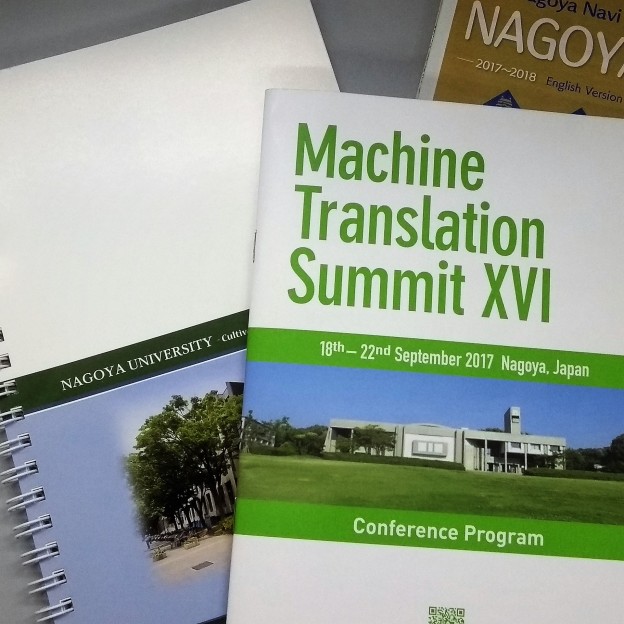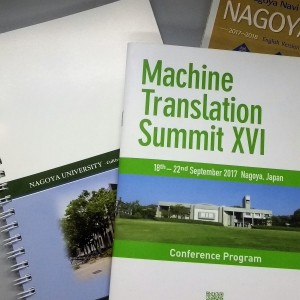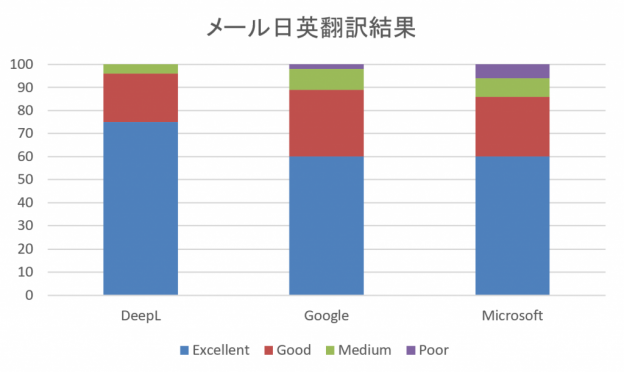The famous secret tool "Translation Konnyaku" first appeared in a work in 1976. Since then, over 40 years have passed. The day when this dream-like tool becomes a reality may not be far off.
The MT Summit XVI (16th Machine Translation Summit) was held at Nagoya University for five days from September 18 to 22, 2017.
MT Summit is a conference event themed around "Machine Translation (Automated Translation)."
This year, it was held in Japan for the first time in 24 years, bringing together not only university professors and researchers from around the world but also IT companies, translation companies, and translators for active information exchange.
Human Science participated as a speaker at this event. This time, we will briefly convey the highlights of the event.
There were academic presentations by professors and researchers, but there were also many presentations by developers from IT companies and quality managers from translation companies, allowing us to hear a variety of discussions.
Among them, what left a strong impression was the discussion on the "possibilities of voice translation software/devices" and the "challenges of applying glossaries in machine translation".
The Potential of Voice Translation Software/Devices
Multiple IT companies made announcements regarding their products.
Voice translation apps for hospitals and voice translation apps for taxis have been released for foreign tourists.
Additionally, there was an introduction of voice translation devices that can be used without internet connections like Wi-Fi, as well as web conferencing software with voice translation features that enable simultaneous communication in various languages.
Such software and devices are likely to continue evolving in the future.
At Human Science, we aim to provide voice translation services leveraging the latest technology and our knowledge as a localization vendor.
HS Voice Recognition QA Testing
http://www.science.co.jp/localization/service/srqa.html
The Difficulty of Applying Glossaries in Machine Translation
We touched on the application of glossaries in our presentation, and it seems that "the application of glossaries" is a common concern among translation professionals in various countries.
Those we met at the venue from the United States, Italy, and Brazil all agreed that "the quality of Neural Machine Translation (NMT) is very good, but the inability to apply glossaries is a challenge." It appears to be a common issue worldwide.
This is because NMT sometimes cannot add glossaries like previous machine translation technologies (engines).
While the application of glossaries is somewhat possible with NMT, it is necessary to consider the development of glossaries and post-editing policies with an understanding of the engine's characteristics.
Human Science plans to actively work towards providing solutions for "mastering machine translation" in the future.
NMT Implementation Support Services by HS
http://www.science.co.jp/nmt/nmt.html
It was a valuable event where we could experience the latest technologies from around the world and learn many things.
The next MT Summit will be held in 2019 in Dublin, Ireland.
*****
At Human Science, we provide custom machine translation solutions tailored to the needs of each company. We also offer a wide range of solutions that leverage the latest machine translation technologies, such as glossary support solutions for machine translation and the web service "MTrans Team" that allows you to share translation content with colleagues.
For more details on our commitment to Human Science NMT, please see this page.
Related Services
Machine Translation and Automatic Translation Services


























